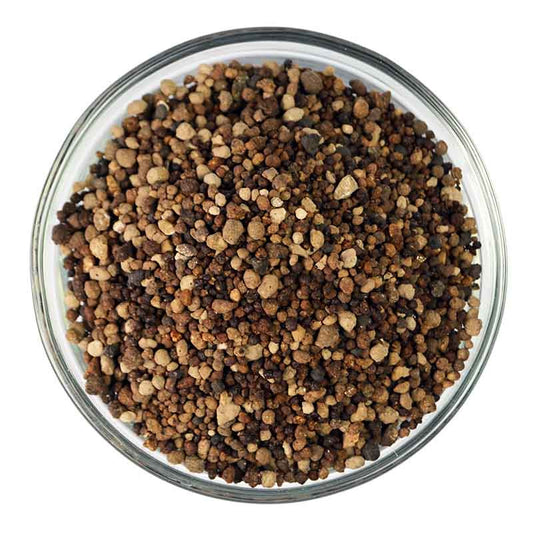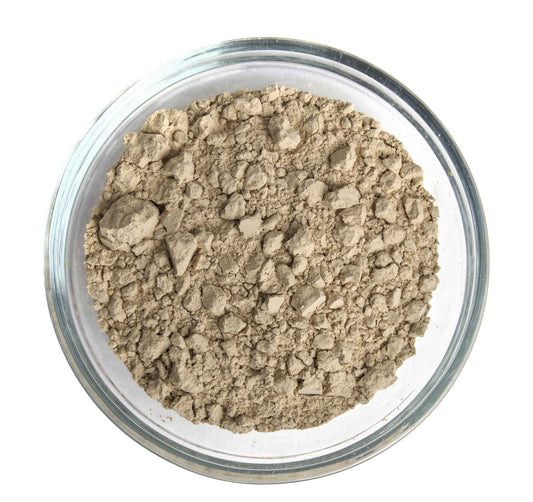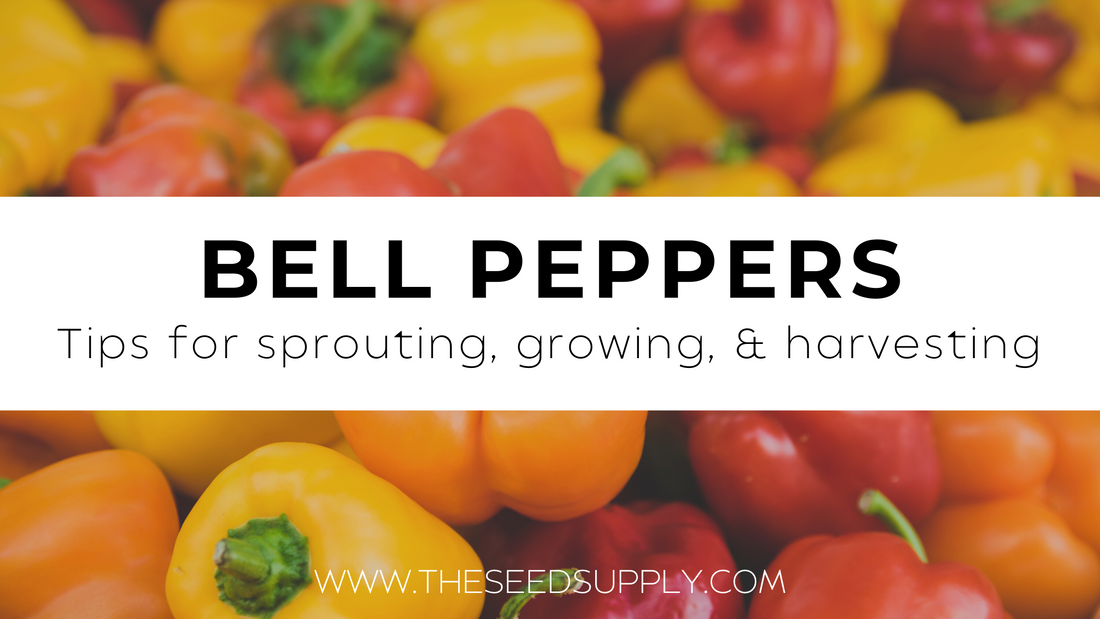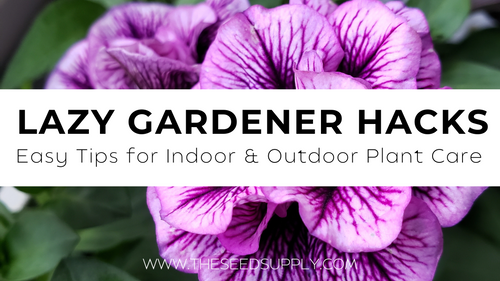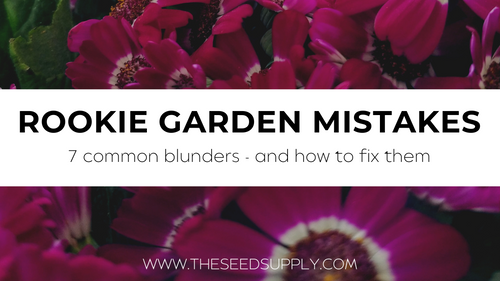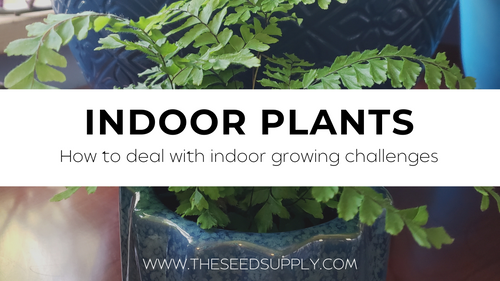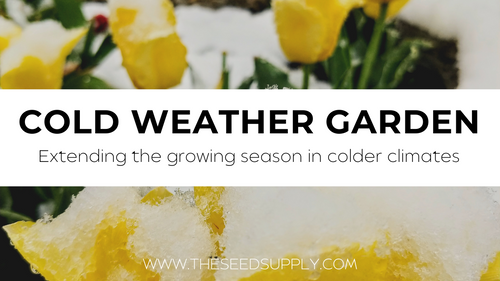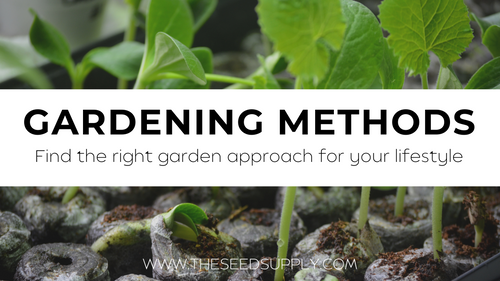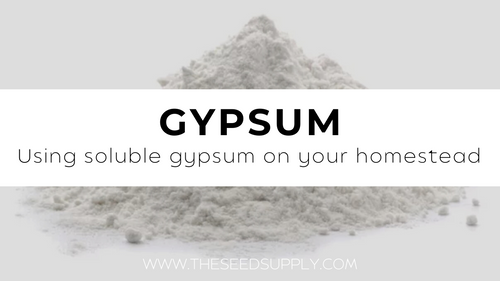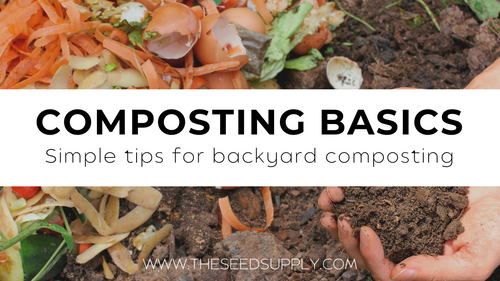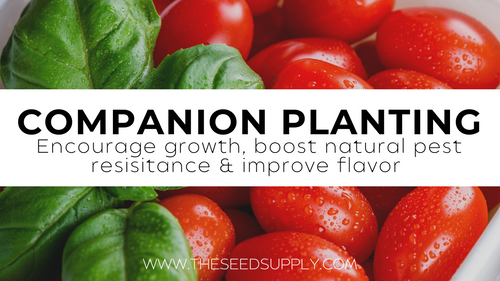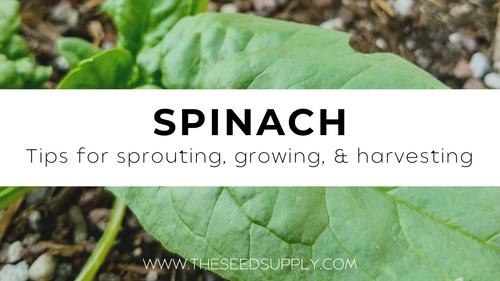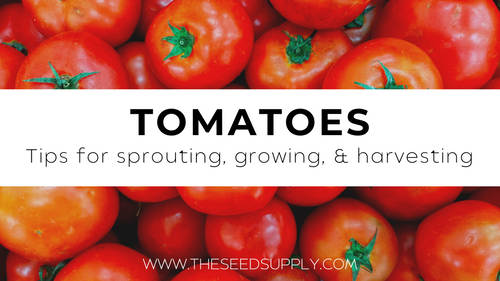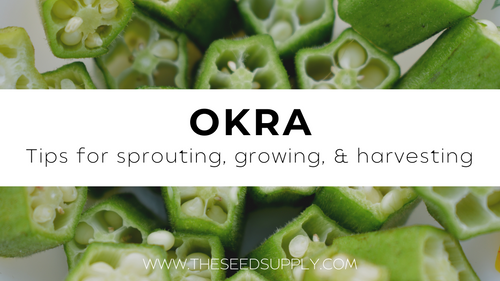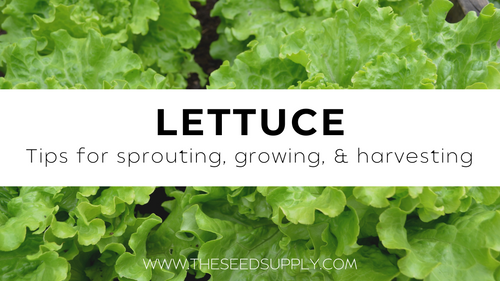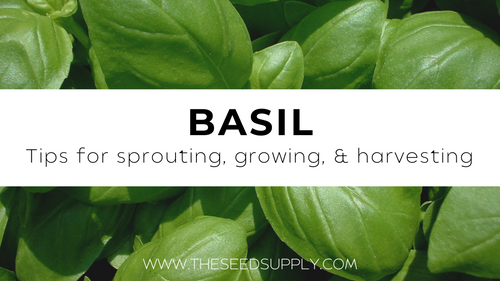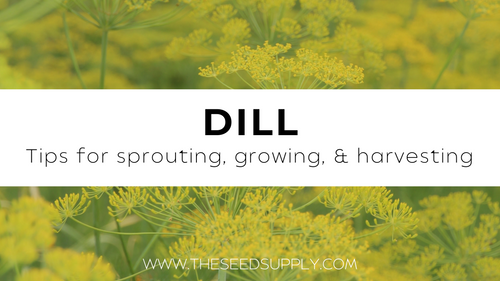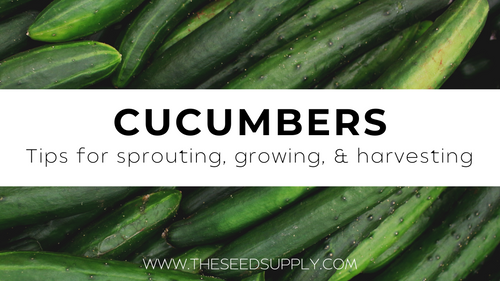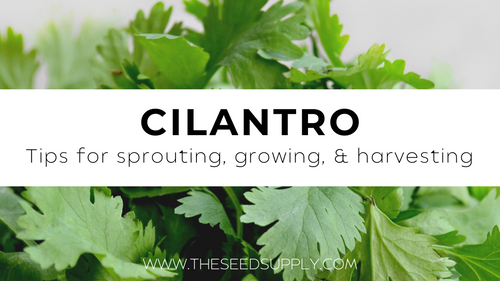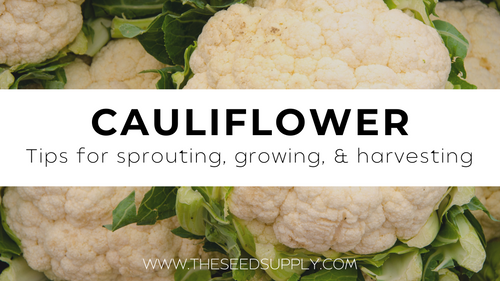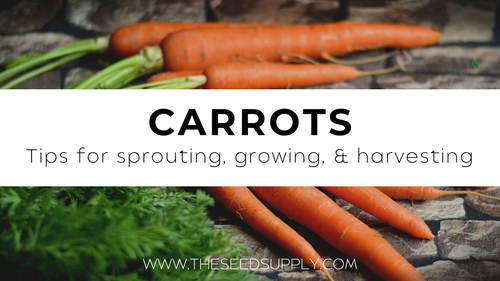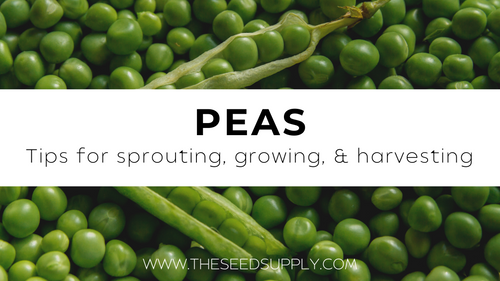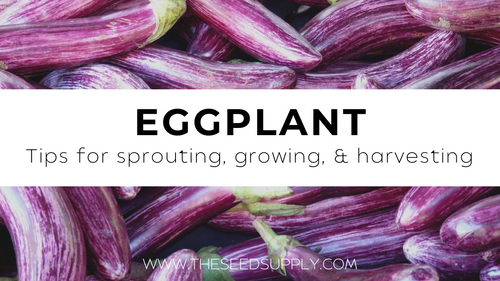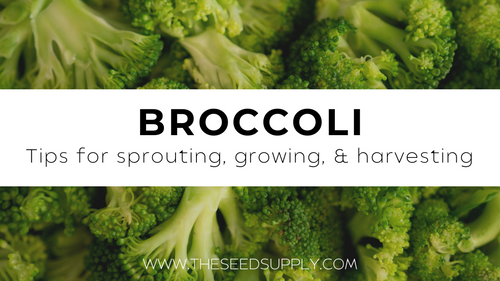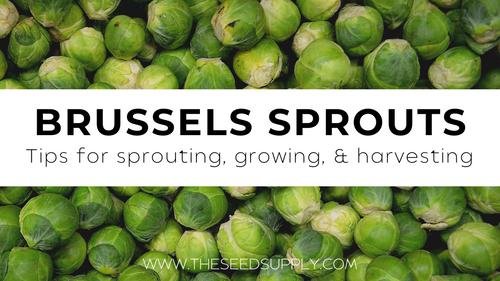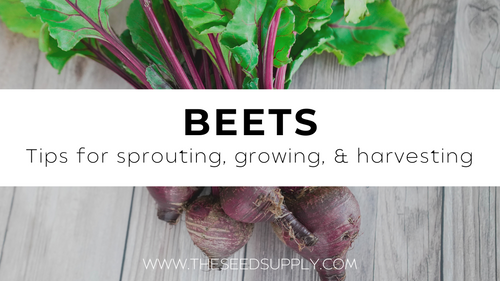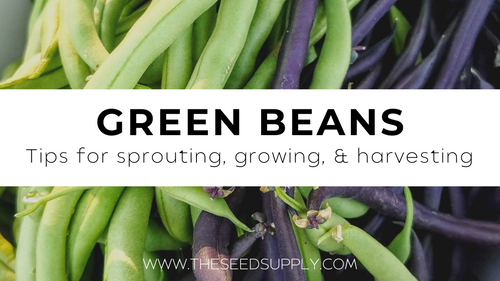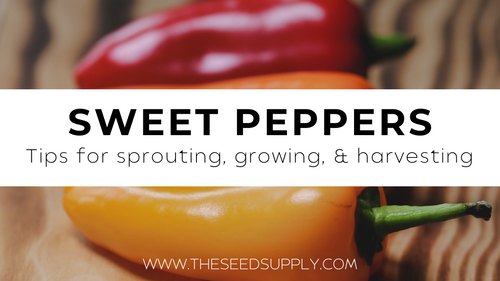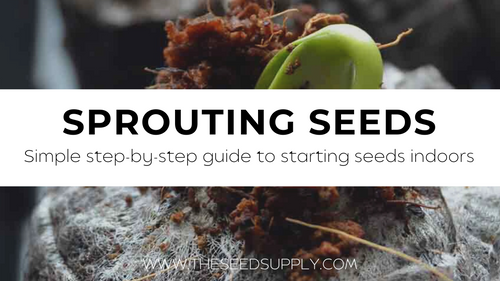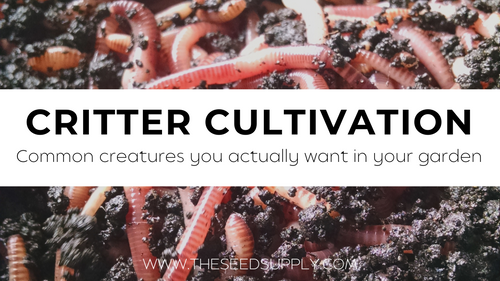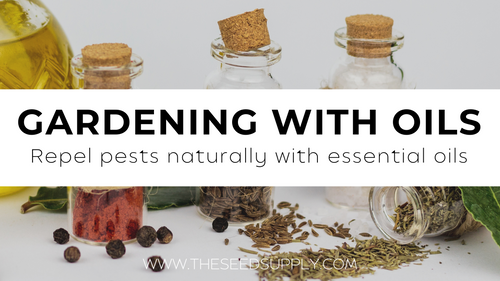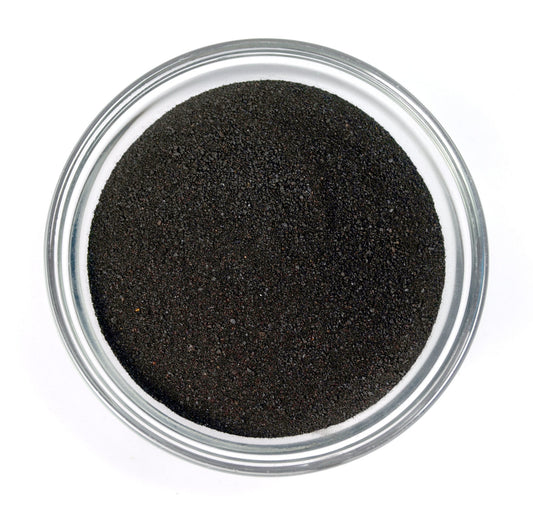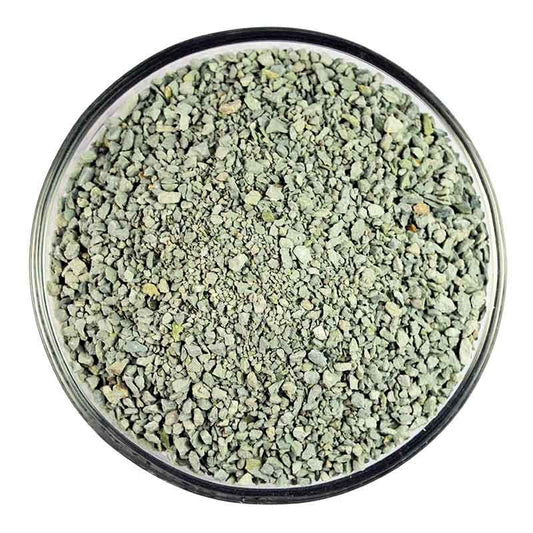Bell peppers are a warmer season plant and come in a wide variety of shapes, flavors, and even color. They can be spicy, sweet or hot and make an appearance in many different cuisines. Bell peppers are thick walled and blocky, making them perfect for stuffing. Bell peppers can be yellow/orange, red or green, depending on how long you choose to wait before harvesting. Peppers turn red the longer they are on the vine and this change also makes them higher in vitamin C.
How to Grow Bell Peppers:
*Bell Pepper seeds do best when started indoors with a soil temperature of 75-80 degrees.
Indoors
- Seeds should be started indoors 8-10 weeks before your last spring frost.
- Plant the pepper seed about a half inch below the surface of the soil.
- Put three plants per pot and as they grow, pinch out the weakest plant. Let the remaining two stay in the pot together and the leaves will not only protect each other but the plants will produce more than they would if separated.
Outdoors
- Space 18-24″ apart in a warm, sunny area of your garden.
- Do not plant outdoors unless you know the soil will stay above 65 degrees. Your pepper plants will not germinate or make it if it gets too cold.
Transplanting
- Begin hardening off at least 10 days before you plan to transplant.
- Space 18-24″ apart, unless you have paired plants, which should be near touching.
- For peppers to survive a transplant the soil must be at least 65 degrees. If you live in a colder climate, try putting black plastic on the ground to keep it warmer.
Harvest
- Use a sharp knife or scissors to cut the pepper from the plant.
- Can last up to ten days when stored in a plastic bag in the refrigerator.
- Peppers are also really great for drying. Wash, core and remove the seeds before slicing into half inch strips. Lay flat on a baking sheet and put in the oven at 140 degrees until they become dry and brittle.
Growing Tips
- Put a couple matchsticks in each hole as you plant. The Peppers will love the extra sulphur.
- Water 1-2″ per week. If you live in an especially warm climate, water everyday to care for heat sensitive peppers.
- Mix 1 gallon of water with a tablespoon of Epsom salts and spray on the peppers when they begin to bloom and then again ten days later.
Pests to Watch For:
- Aphids
- Flea Beetles
- Blossom End Rot- Appears as a dark, soft, sunken area.
- Cucumber Mosaic Virus

